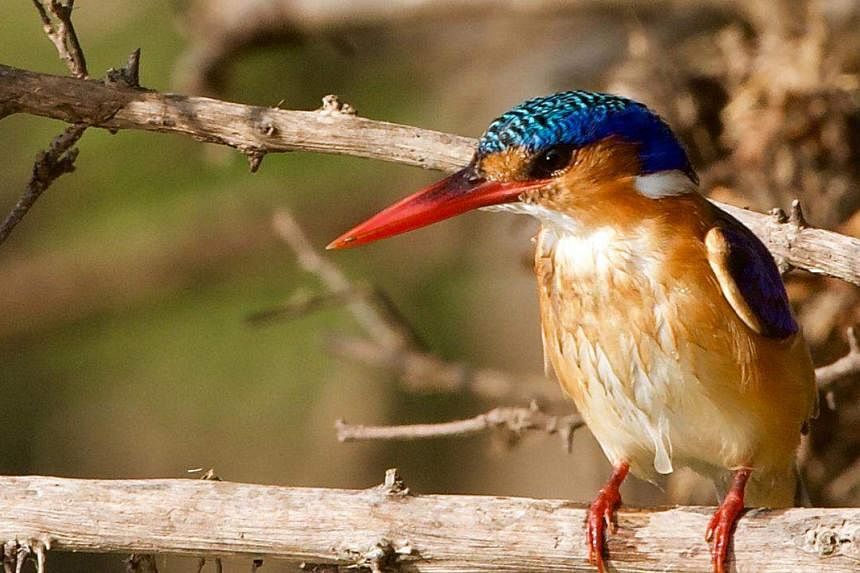After a pandemic-induced delay of two years, my wife and I finally made it back to the Serengeti in early August, just in time for the wildebeest to traverse the northern end of the Serengeti National Park.
This is part of the Great Migration, the greatest animal show on earth.
The wildebeest migration is a year-long circumnavigation of the Serengeti and Mara ecosystems that has been happening since the dawn of time.
Some two million wildebeest and half a million zebras spend the year running in one 2,000km circle following the rains, so that they can feed on the fresh grass that sprout.
Depending on the time of the year, you can witness 300,000 wildebeest calves being “dropped” or born; wildebeest cantering through open savannah; and, the greatest spectacle of all, the Mara River crossing.
This is when the wildebeest, zebras and gazelles cross the Mara River. Waiting in the river are the biggest crocodiles one has ever seen. Also waiting on the opposite bank are lionesses stalking the exhausted wildebeest.
Up in the marula tree a short distance away, we spy a leopard also biding its time. It is Animal Planet live.
As we start our six-day safari in Tanzania, our single-engine Cessna 206 does a hard bank left, making its approach to the Lamai Serengeti landing strip. Abruptly, we abort our approach and the Cessna pulls back up into the morning sunrise.
That is because, below us, a herd of wildebeest is galloping, actually thundering across the airstrip.
Is a lioness stalking them? Or is this their normal onward journey towards the Mara River? Our hearts are pounding. This is what we have come to see... again. I have savoured this experience some 25 times over the past two decades, and the thrill never ceases.
We finally land and get into our open land cruisers and head to camp. My wife, ever vigilant, hears baboons calling in alarm. Then we spot a coalition of two cheetahs stalking just off the airstrip and understand why the wildebeest were panicked.
We settle into the chic Singita Mara River Tented Camp (US$2,300, or S$3,300, a person a night), which operates only five months each year. It has a “Michelin quality” locally trained chef and an exquisite selection of South African wines.
The next day, at 6am, in the pitch dark of an African morning, we set out in search of the crossing. Fifteen minutes into the drive, we drive straight into a beautiful sunrise. It is cool, the air is crisp, the humidity is low and the morning is invigorating.
Soon, the walkie-talkie crackles with word from another vehicle that the herds are gathering at “crossing three”. There are some nine possible crossing areas along the Mara River in Tanzania.
We drive in the direction of crossing three. Masses of wildebeest and zebras are building up on the cliffs overlooking the river.
Now, it is a question of patience. The wildebeest are notoriously fickle. They approach the river, they step back. This continues for two hours.
They are wary of the massive crocodiles that lie motionless in the river. The heat of the day will usually drive the wildebeest to jump in and make the crossing. We wait in anticipation.
Finally, one wildebeest takes the plunge. Then it is a mass of animals making the manic dash across the river. This goes on for an hour, with a probable hundred thousand animals crossing.
Many do not make it as they fall prey to the massive jaws of the hungry Nile crocodiles. This is the one time of the year for the reptiles to gorge on the wildebeest.

The entire spectacle is breathtaking. It is also gut-wrenching to watch young wildebeest being washed down the river. The current is much too strong.
Watching the wildebeest come up the river bank on the other side, up in a marula tree, is a beautiful leopard waiting for an opportune moment to pounce on the small, weary or injured.
Despite having witnessed the crossing several times, it never ceases to amaze.
Watching the crocodiles devour wildebeest using the “death roll” – a process where the crocodile bites into the wildebeest and rolls its body several times to break off a piece of the carcass – is a sight to behold.
Watching cheetahs take down young wildebeest is not for the queasy. We also watch hyenas feasting on the carcasses and, finally, the vultures will pick off every last bit of flesh. The entire animal is consumed. Nothing is wasted.

Apart from the migration, birding enthusiasts will love the endless variety, from tiny collared flycatchers to beautiful malachite kingfishers, and from charismatic fish eagles to graceful lappet-faced vultures.

While bird life seems to flourish, climate change is sadly having a direct impact on the migratory patterns of the wildebeest.
A decade ago, one could predict with a high degree of certainty exactly where the herds would be. Today, with weather and rainfall patterns unpredictable, that certainty has diminished.
That said, there is simply no better way to experience the great outdoors while spending quality family time uninterrupted by an Instagram feed.
- Tarun Kataria, an independent director and venture capitalist, is senior adviser to the World Wildlife Fund, Singapore. He was previously chairman of the Singapore Conservation Trust.
- In Quest Of is a new series on the joy of niche exploration amid the resurgence of international travel.

